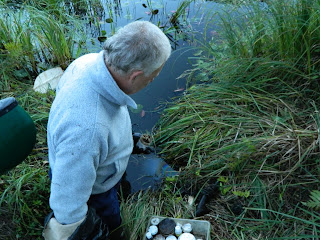"When I said nothing gets by the panel trigger I meant it!! Luke"Although not recommended for mice, it can happen in a 5 x 5 x 24 Comstock Swing Panel double door trap!
Sunday, September 29, 2013
Wednesday, September 25, 2013
"Jim, I'm absolutely loving my new squirrel cages. The panel trigger gets them every time! I wasn't sure about the nose cone at first, but now prefer one over wings. I've been hammering the ground squirrels and chipmunks with a positive set over their holes. They also work great with one door down and use of bait. Besides a few older traps I have, I am now using almost exclusively your cages. Thanks again for producing such a superior product! Luke Pennington"
Saturday, September 21, 2013
With powered doors and a wire trigger, even larger animals are being taken in the shortest double door traps available. Though not recommended for raccoons, 18 inch double door traps with a 9x11 opening take raccoons with regularity. Above is a 15 pound 'coon in the 18 inch trap taken by Tim in Ohio.
Likewise, the 24 inch double door traps easily take armadillos as Dusty in Arkansas found out. Armadillos also have been caught in 18 inch traps on accession, again not the recommended size. The 24 inch traps have replaced traps that were 36 to 48 inches in length, making setting easier and faster, while allowing the shorter traps to be placed where the larger traps would not fit.
Wednesday, September 11, 2013
Beaver Set using Castor
Subscribe to:
Posts (Atom)








